The Gift of South Dakota
Subscriptions to South Dakota Magazine make great gifts!
Subscribe today — 1 year (6 issues) is just $29!
Cookin' Kuchen
Editor’s Note: This story is revised from the January/February 2004 issue of South Dakota Magazine. To order a copy or to subscribe, call 800-456-5117.
You don’t have to be German to appreciate kuchen, South Dakota's official state dessert. Kuchen is a traditional German pastry that roughly translates to “cake.” Typically, kuchen is made with a sweet dough and contains a fruit or custard filling. There are about as many different recipes and styles of kuchen as there are people who make it.
German immigrants brought kuchen to South Dakota in the 1880s. Homesteaders often brought very little with them besides their clothes, basic tools, self-sufficiency and a determination to face the challenges that a rough and unsettled South Dakota threw at them. Many of them settled in McPherson County in north central South Dakota, in towns like Leola, Eureka, Wetonka, Long Lake and Hillsview.
Their hard work and agricultural prowess turned McPherson County into one of the largest wheat-producing areas in the country. In fact, in the late 1890s Eureka billed itself as the “Wheat Capital of the United States.” In 1892, 3,300 railroad cars of wheat were hauled out of Eureka. This was a remarkable achievement in an era before the internal combustion engine, when the horsepower that planted and harvested crops was still provided by horses, oxen and people.
German was the first language for many county residents until the past two generations. Even people born in the 1960s and 1970s remember their parents and grandparents speaking German when they didn’t want their children to know what they were talking about.
There aren’t many lutefisk feeds in this part of the state; it’s a kuchen-eatin’ crowd if there ever was one. Eureka holds a Schmeckfest every fall, and Leola celebrates Rhubarb Day every other year. Kuchen is prominently featured at both events.
But kuchen is not limited to McPherson County. Delmont has an annual Kuchen Festival, and bakeries in many small towns make the treat. Those who’d like to try kuchen can ask whether their local bakery produces it or their grocery store carries it, they can make their own, or they can contact the Eureka Kuchen Factory or Pietz's Kuchen Kitchen of Scotland.
Clean Your Plates for Aunt Edna's Kuchen
Growing up in Leola, kuchen was something we always looked forward to — if we cleaned our plates. Since my mother and grandmother were great cooks, this was never a problem. Like many family recipes, the one for kuchen has been handed down and around our family for years. My grandmother’s sister, Edna Neuharth, shared it with my grandmother, Adeline Ehley, who handed it on to my mother, Leta Guthmiller.
A great thing about kuchen is that it comes in so many styles and flavors. While this is good, it sometimes led to divisions at the dinner table. Adults preferred rhubarb and prune kuchen, while children favored apple, peach or strawberry. To get around this, my mother often made a sugar kuchen, which she knew everyone would like. Her recipe is flexible enough to make kuchen with or without fruit.
When cooks made kuchen to feed men working in the field, they didn’t make just one; they made several, and extras to freeze. Great-aunt Edna’s original recipe makes about eight kuchen. To make fewer, adjust the ingredients. Or make eight, some plain and some with fruit.
Crust:
1 package dry yeast
1/8 cup warm water
2 beaten eggs
1 1/2 cups milk
1/2 cup sugar
1 teaspoon salt
1/4 cup vegetable oil
4-5 cups flour
In a large bowl, dissolve yeast in warm water. In a stainless steel pan, scald the milk by bringing to a boil and then reducing heat. The milk should have a film on top of it. Add sugar, salt, eggs and vegetable oil into the milk. Add milk mixture into the bowl of yeast and water. Mix in 4-5 cups of flour, enough to make a good dough. Let rise about one hour. Divide the dough into eight equal pieces. Roll each to about 1/4 inch thick and place in a greased pie pan so that the dough covers the bottom and comes about halfway up the side. Let dough rise in the pan for 15 minutes. Add a layer of thinly sliced apples, strawberries or other fruit if desired.
Filling:
4 eggs
1 cup sugar
2 cups cream
2 cups milk
3 tablespoons flour
On the stove, heat the milk and cream together. In a large bowl, mix the sugar, flour and eggs together. Add the milk and cream mixture to the sugar, flour and eggs and return it to the stove and cook until it thickens. Pour about 3/4 of a cup of the filling mixture into each crust.
Topping:
2 cups sugar
2 cups flour
1 cup margarine
Mix the sugar, flour and margarine together so that it is somewhere between smooth and lumpy. Pour the topping on and bake it in the oven for about 30 minutes at 350 degrees. After the kuchen comes out of the oven, let it set for five minutes, then remove from the pan and let it cool.
About the author: Trevor Guthmiller, a native of Leola, lives in Brandon with his wife Melissa and their children Adam and Ashley.


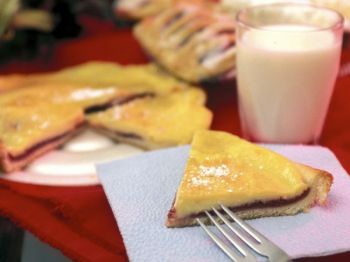
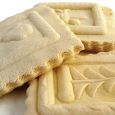
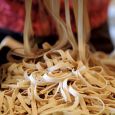
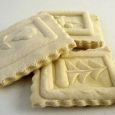
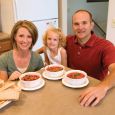

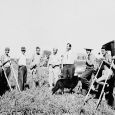


Comments
Lou Ann
In the meantime, any other kuchen makers have recommendations?
For making the crust I also had trouble , I had to add also more flour then it called for to make a dough. otherwise it would of been a batter not a dough. I'm hopeing I don't have to throw out the dough cause I only use 1 pkg of yeast.
Like a lot of these old recipes, measurements weren't always very precise.
Please advise how does one can make and bake an apple strudel/kuchen ?? and have it somewhat chewy and moist and look like a typical coffee cake. It would typically feel a bit heavier than the typical grocery store coffee cakes. Unable to find these kuchens/strudels anywhere here in Houston, TX
Your thoughts will be most appreciated.
Regards,
Ron Deane
I was wondering are you related to the people who used to run the bakery in eureka sd. I'm sure we are related. Please email me.
Yes, I've always thought the bread dough recipe was a bit odd. I have tried to make it using enough flour to make the dough elastic. That took 3-4 cups of flour. The result was a tough bread.
I've resigned myself to the fact that the dough is sticky. After the second punch down, I scoop about a cup of dough onto a thickly floured surface. I thickly sprinkle more flour on top. I work the flour into the dough, roll it out a little, then press it into the pie pan. Tender, delicious bread!
Some great cooks have recommended that I use frozen bread dough or the dinner roll box mix for the bottom. I haven't tried either so can't say how they compare.
Definitely scald the milk for the custard. I also heat the milk in the bread dough for 60 seconds so it isn't cold.
Forget the margarine. Use only butter. We always have topping left over, even after liberally covering the top of the kuchen. The butter in the topping should be room temperature. You are making a crumb topping. Do not melt it.
Can someone share the recipe for a prune filling or a poppyseed filling? Also, the measurements for the cocoa and sugar filling would be appreciated.
Happy baking!
(I'm off to sample my latest rhubarb kuchen right now!)
Here also is a link to a picture: https://www.facebook.com/photo.php?fbid=10205229701562063&set=gm.548373001961035&type=1&theater
http://library.ndsu.edu/grhc/foods/recipe/kuchen_memories.html
Thanks.
The recipe you are thinking of is call Fugen
It is a sweet dough mixed. The dough is rolled out on of heavily floured board. My grandmother then to a crystal glass from the Quaker Oat Company press the bottom down on the dough lightly leaving the glass imprint then flip it around push the top of the glass down through the dough. Then this piece she would roll the glass lightly leaving imprints. She would then that a shot glass and push the top though the center of this piece. The first piece she spreads the pureed prunes on then flip the other dough piece with the hole top needs the sides together and then stuff more prune puree into the hole.
Then she would dump this in into boiling lard. When it floated she would pull it out of the lard onto a paper towel or brown bag let cool for five minutes then put icing or sprinkle with sugar and cinnamon, or brown sugar, or powder sugar and serve! The secret is cook it in lard.
Cook 2lbs large prunes & 6 oz. apricots. Add 2 cups thick applesauce, some sugar and 2 tablespoons melted butter.
That's what she wrote. If you find you like this filling, I credit Barb Guida, my old United Airlines friend. Between rooting for the Vikings and the Bears (I'm the Bear) we two old birds talked about authentic immigrant dishes - German, and Filipino. I miss her.
Thank you for this recipe. Others I've found don't have a yeast dough base. This is the closest I've found to what my Granny made.